Latest news and features
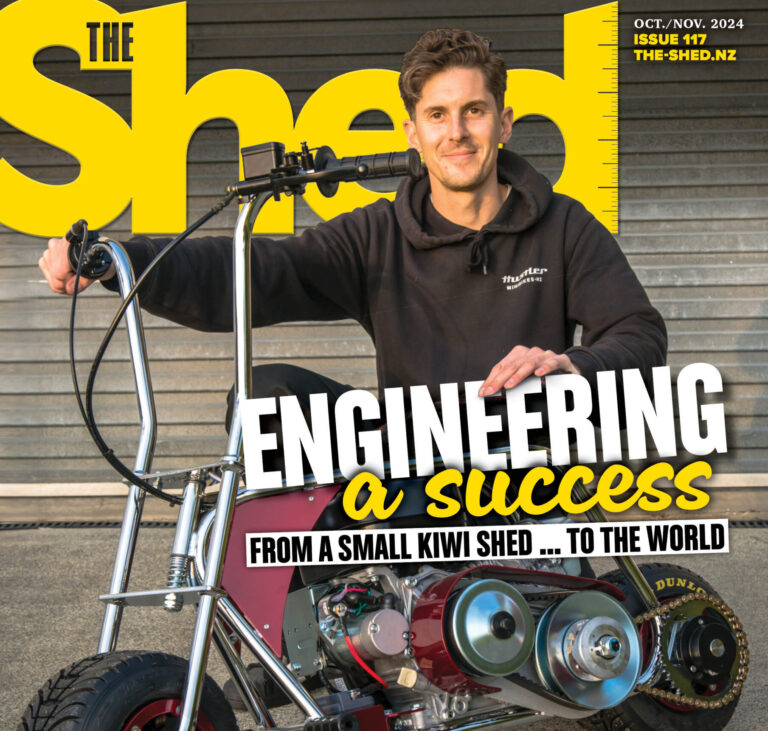
The Shed magazine October/November 2024 issue 117 on sale now
Meet 21st century sheddie, Tim O’Connor of Army Bay Engineering, who has created his own unique brand of mini bikes from his small Whangaparaoa peninsula workshop, Hustler Mini Bikes.
In the true spirit of the Kiwi DIY tradition, Tim rallied from the disappointment of a Covid-related job loss to create his own very successful, satisfying, and special business.
“There is no room for mediocrity nor false modesty in the shed of precision engineer Tim O’Connor. His Instagram tagline is: ‘Maker of the world’s finest minibikes,’ and it would be a hard ask to find someone more motivated and committed to improving their product than this self-confessed perfectionist.
For Tim, designing, building, and marketing his ‘Hustler’ minibikes is not just about selling units. His scaled-down, pocket-rockets have a deeper, almost sentimental significance. He has been riding small bikes since the age of 12, and remembers building minibikes in the garage with his father.
He says, “That is where my love for bikes and engineering started.”
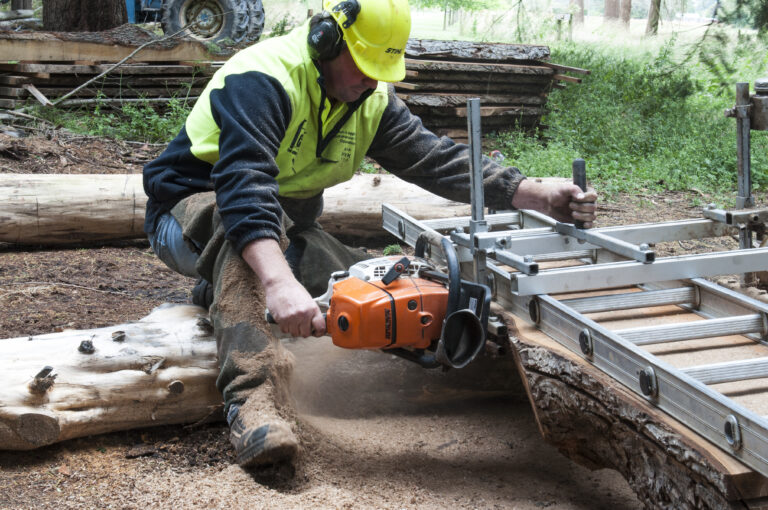
Making the cut
Sentimentality and chainsaws don’t usually go hand in hand but Dave Neame uses the machines not to massacre but to preserve pieces of wood for posterity.
The long-time logger, who is based in North Canterbury, uses his prowess with a chainsaw to mill trees into slabs that can be turned into furniture, kitchen benches, or used as building features.
“I get approached by people who’ve got trees that have sentimental value and they want more than firewood or mulch out of them. I come and mill them up and they can get made into something that becomes a family heirloom.”

Versatile Hi-Q Toggle clamps
Toggle Clamps
When it comes to clamping, lever-action toggle clamps offer excellent power from a quick and easy motion and they are simple to install for ready access. Toggle clamps have a multitude of uses in engineering, metal fabrication, and woodworking. Hi-Q Components stocks a wide range of high-quality Turkish-made Kukamet toggle clamps including horizontal and vertical actions, latching or push–pull configurations with different mounting options, and even pneumatic versions.
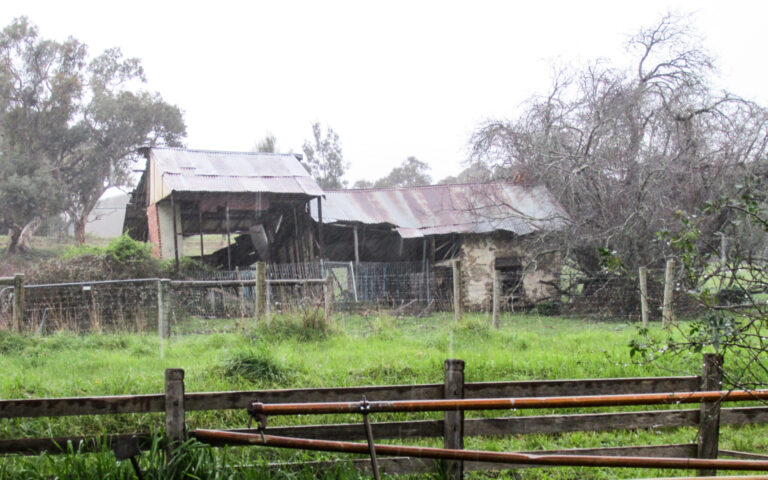
Wood fan by name and by nature
Brian Woodlands is semi-retired now but in his shed in south Australia he can proudly show off the samples from his joinery trade, the machines that supported his livelihood, the dozens of wood samples he collects, his antique hand tools and the rustic shed where “I have done some big stuff in this small workshop over the years.”
While the wind can come visiting through the spaces in the walls and open door, there is a cosy fire in an inner-room of the old-style country building and yarns aplenty to warm up the shed with an animated atmosphere.
“I was born here in the Adelaide Hills. My grandparents lived here in this district pre-war [World War Two] and my mother and father lived in the wattle-and-daub cottage over the road,” Brian says.
“In 1968, I took up an apprenticeship as a carpenter and joiner when I was 14 years old. I was not that rapt in school. As an apprentice you had to sacrifice wages to train but by time you were 18 or 19 it was good money. Today, apprentices start too late because they turn to the money first and it’s better early to be working at McDonald’s.”
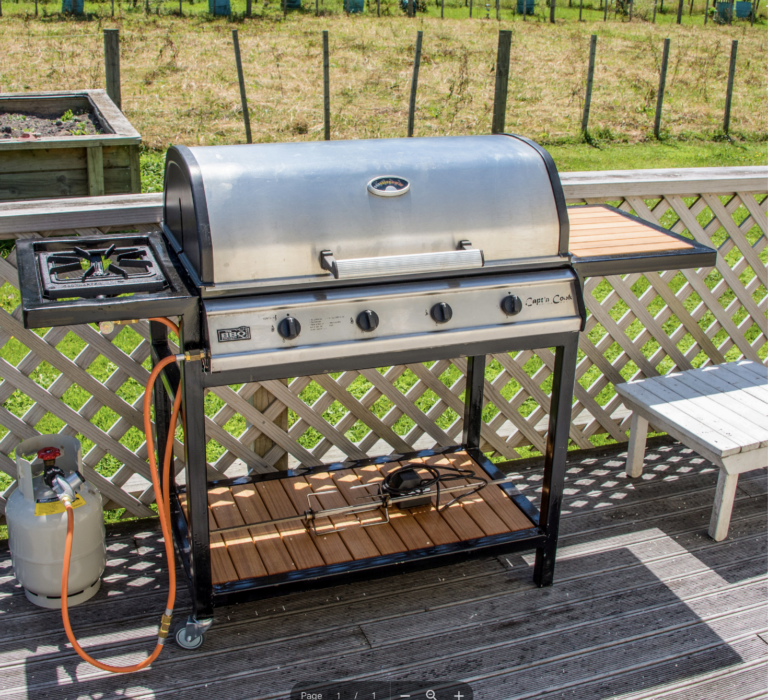
Looking hot
I began by careful measurement of the existing barbecue and designed a framework around it. At the same time I decided to upgrade and purchased a reasonably cheap single burner that didn’t have a long burner tube to contend with.
The framework is essentially just four legs with a couple of bars to sit the barbecue on, two outriggers that can be used for the side burner and a table for placing meat before and after cooking. The barbecue is attached to the base by four screws through the lid hinge.
I cut all the parts on the bandsaw, starting with all the bevelled parts. I elected to make the four legs contiguous with the arms of the outriggers so they are welded together as one piece, rather than making the outriggers as separate pieces and welding them to the tops of the legs.
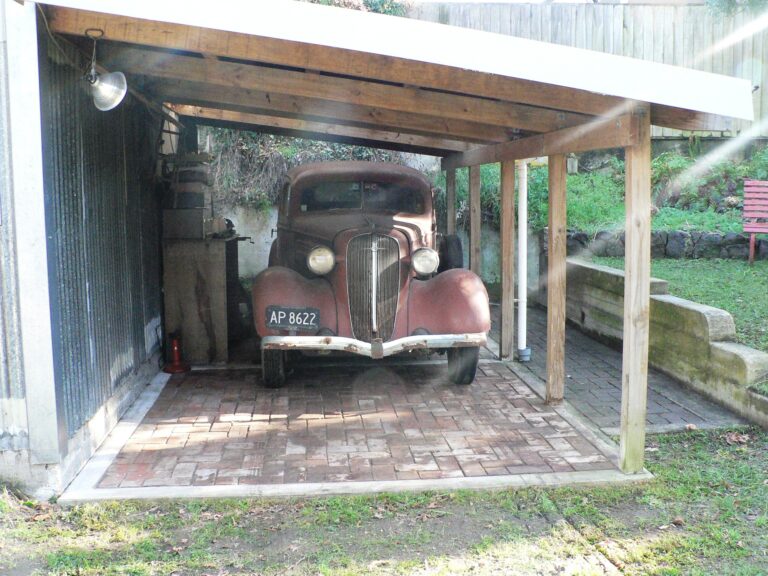
Getting floored
After Christchurch’s 2011 earthquake many of the city’s brick structures were damaged beyond repair and were pulled down and almost every chimney in our part of town was demolished. Before the earthquake, clean red bricks were more than a dollar each; after, there were so many of them, they had no value. Many property owners left piles of bricks on the kerb in the hope that they would be taken away.
The carport of my shed was meant to have a concrete floor but because of the many free bricks and the unavailability of pre-mixed concrete for weeks, I decided to make the floor out of recycled “earthquake” bricks.
The original scheme to incorporate the numbers “2011” for the year in yellow glazed bricks was too complicated in the time available. But a paved floor can be relatively easily re-worked so the number may yet appear.

Along for the ride
Every Wednesday and Saturday morning about 20 retired tradesmen leave their lunch boxes in the Oamaru Steam and Rail smoko room, shrug themselves into their overalls, and head for the old railway workshop to get on with the day’s tasks.
They might be restoring turn-of-the-20th century railway carriages, stripping down a locomotive or installing wiring systems. Each man brings a lifetime’s worth of skills and the willingness to learn something new.
They work out of the old New Zealand Rail wagon workshop, or lifting shop as it was called, at the back of Oamaru’s historic precinct. The Oamaru Steam and Rail Society Inc took over the building in 1989. Most of the tools and equipment needed to complete the volunteers’ first major project were on hand so they rebuilt the 60mx12m workshop which had been partially demolished by NZ Rail when they decamped.
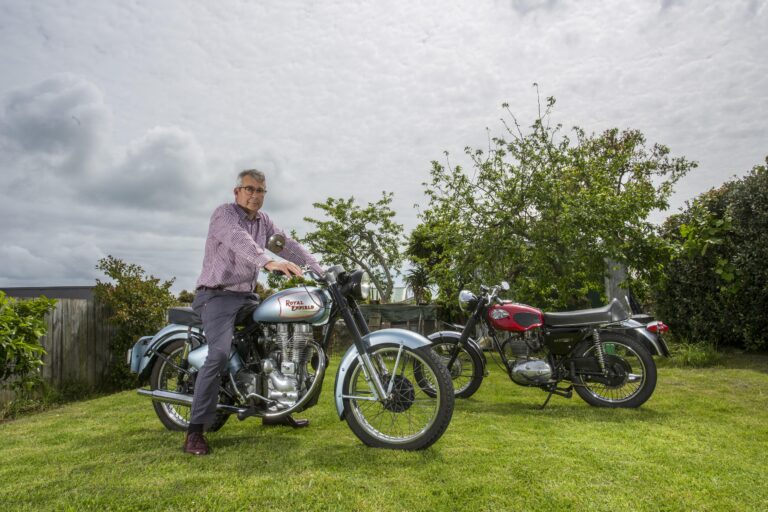
Easy rider
Simon Dew has a thing for Italian and English bikes – think Ducatis, BSAs and Royal Enfields. Over the years he has spent hours in his shed labouring over rebuilds and his passion for restoring bikes has been undimmed by the sometimes tortuous process.
“It’s all a bit nonsensical really,” he admits. “It would be much easier to go out and buy a bike that’s up and running and hit the road but for me it’s not about the bike itself but the process.”
Simon likens rebuilding bikes to herding cats. “Getting compliance so a bike can get back on the road is often long and arduous – and then you’ve got to keep it going.

Buckets of heat
When a high wind-gust blew a tree onto the overhead cable on our Waikato property, one of the phase wires broke. In our home, the electric stove and half the lights stopped working. That night, it was just as well we had our clay-lined bucket stoves to cook on.
The observant traveller visiting Asia soon becomes aware that the clay-lined bucket stove is the prime means of cooking for families, street stalls and even for up-market restaurants. In heavy Bangkok traffic, we saw a family of five on a small motorbike. They were carrying a bamboo pole with bamboo trays suspended from each end. One tray was piled high with food for the market and balancing on the other end was a bucket stove (which had been lit and was hot).

Preserving the past
It started with a teddy bear, then an American Greyhound bus, a wind-up Sherman tank and an aeroplane. Alastair Allan held on to his toys long after others would have put them aside. He’s still got them, along with several thousand other items that he has bought or acquired over the past 70 years or so. He declares he is holding on to the past for the future to tell the story of how people lived in North Otago as far back as 150 years ago.
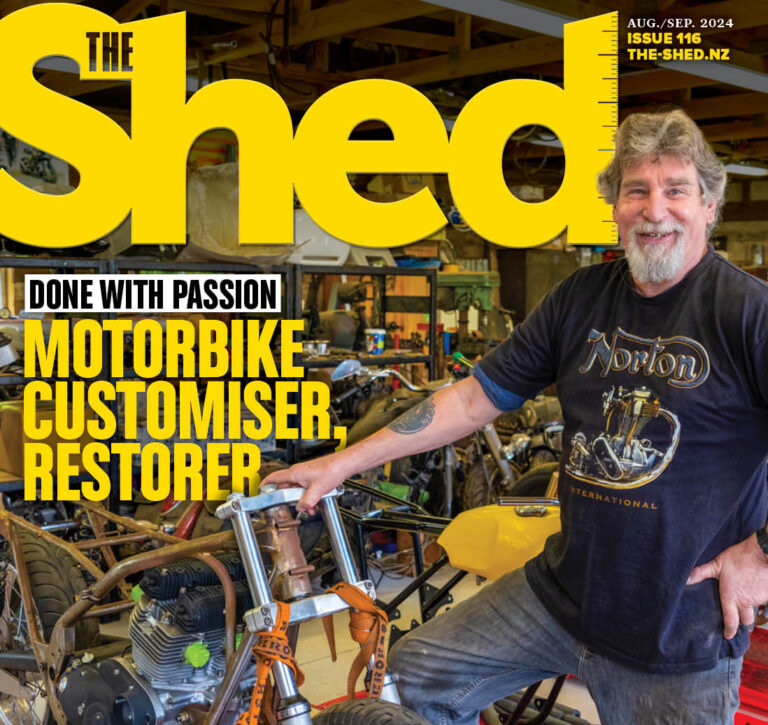
The Shed magazine August/September 2024 issue 116 on sale now
When life deals you lemons, make lemonade: a business collapse led John to build a new, bigger business based on his passion for motorcycles
“I really want an old dairy factory”– that’s what John thought when contemplating the move from Katikati to Taranaki a few years ago.
He sat down after his divorce and thought: “What do I need for the rest of my life?
“Well, I need a shed, a bed in the corner, and a place to stuff around with my motorbikes.”
John’s search took him all over the North Island; he was looking for something that was cheap enough. It didn’t have to be flash, as he wanted a few bob to help his kids to get on the property ladder as well as to be able to follow his passion for building and customising motorbikes – something that he had been doing for a long time.
An old garage in Patea came into the picture but, although it met all the criteria, it became too complicated to purchase. Then an acquaintance told him of a house he had for sale in a small town a little further up the coast. In the end, that turned out to be the perfect location.”
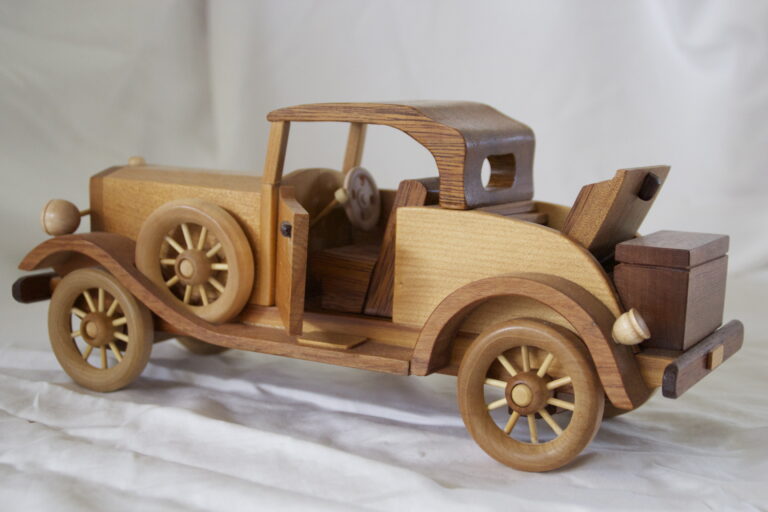
Kaizen in wood
Kaizen is Japanese for a philosophy of continuous improvement, or working methodically seeking to achieve small, incremental changes in the process of improving. This term has been particularly championed by Toyota Motor Corporation as a process to facilitate change within that organisation.
For me, it epitomises my woodworking journey since retirement. I had dabbled in bigger stuff—from building and construction to boat-building (three launches) and fitting out—as sidelines and sanity savers during my years in corporate life.
But when I turned to small and delicate it necessitated a rethink. Thus “kaizen,” which seems to have been driving incremental changes in what and how my projects have evolved.
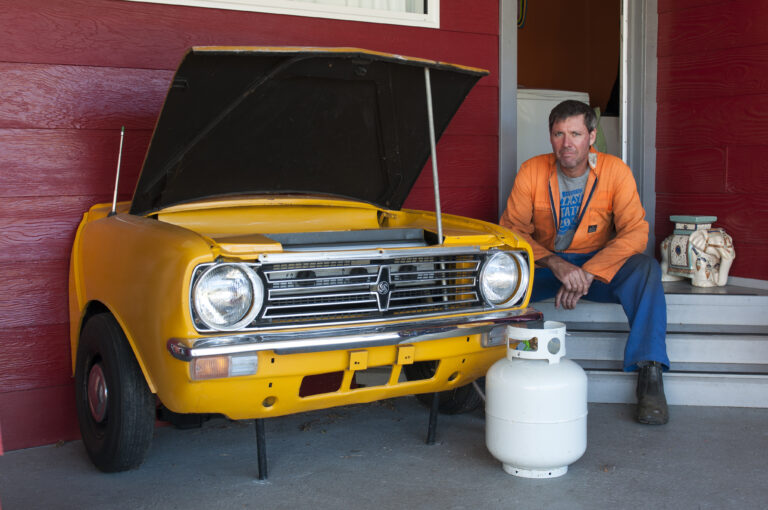
New life for old stuff
Broken blades, tired tools, worn washers, grimy gears. These are sorry sights for most sheddies, but for Bruce Derrett they are the treasures of his trade. The Motueka metal artist combines his skill wielding a MIG welder with a highly fertile imagination to turn other people’s junk into quirky creatures, funky furniture, and striking sculptures.
Bruce, who ironically failed metal work at school, has always had an eye for mechanical bits and pieces. “As a kid I was always pulling things apart, like clocks and radios. It used to really frustrate my mum,” he says. Now he puts things back together again, albeit it in a very different form.
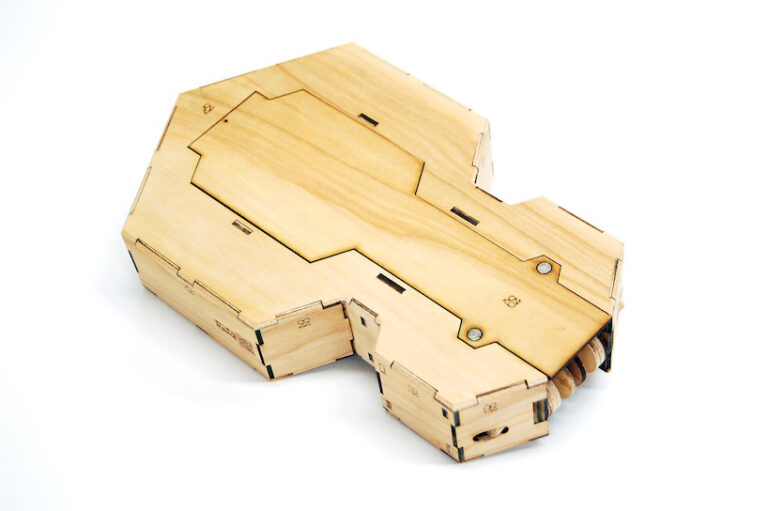
Ponoko—a cut above the rest
While laser cutters are now practical for home-build projects, they are not something that everyone will want to run. They take up bench space, need care and feeding, get expensive in large calibres, and if you don’t use one that often you might well be better off letting a company like Wellington-based Ponoko cut things for you.
Ponoko stock a wide range of materials and are experienced with using their laser cutters on them. Handy, but scarcely unique given the number of engineering outfits that are out there that’ll do pretty much the same thing.
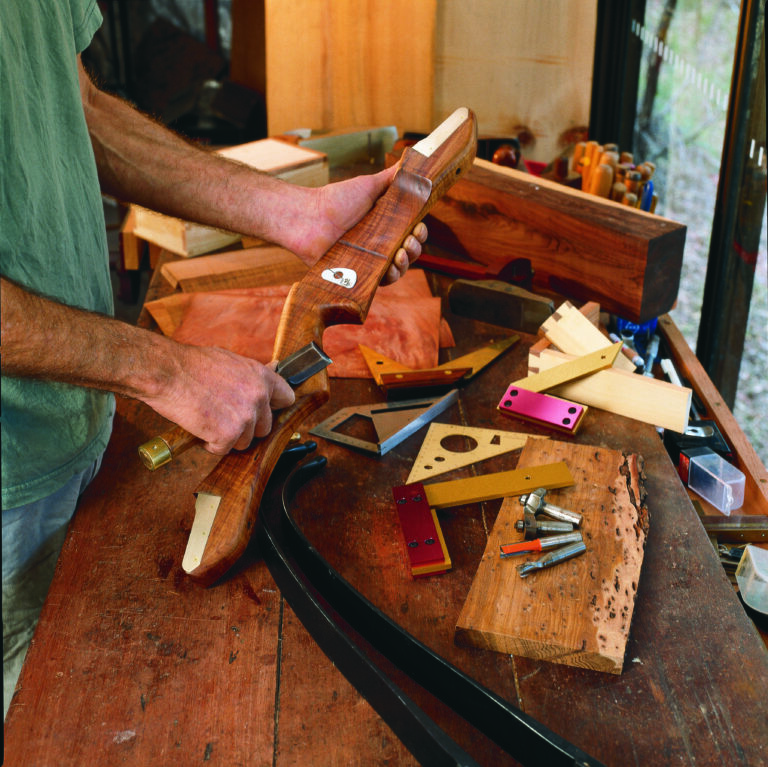
Bow making – take aim!
Archery is a satisfying sport that has its roots fixed in the primal skill of hunting. As a woodworker it is an added bonus that you can make at least part of your own bow yourself. A bow like the one in this project is called a recurve and consists of a handle, or riser, two limbs (the flexible parts that bend), a string and an arrow rest.
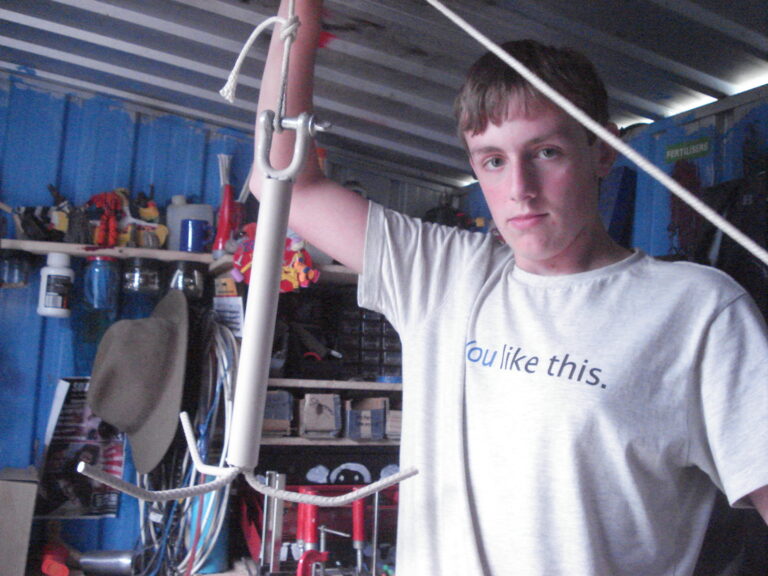
Making a kayak anchor
This simple and effective rebar anchor is perfect for small boats and kayaks and is the result of welding $30-40 worth of materials. If you are a small boat and kayak enthusiast, fabricator or just want to learn some new metalwork skills, this two-hour project will be great for you; it needs few welding skills. Remember that the construction is modular and can be made to fit your needs.
With a net weight of only 7 kg, the anchor will not weigh down a boat or kayak. Anyone can pull it up, but it will still catch the seabed.
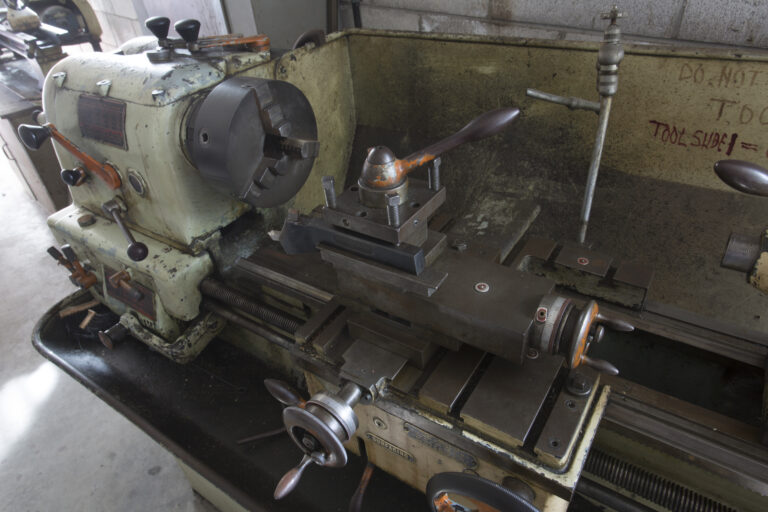
Frozen in time
I just love nosing around other people’s workshops to see what they are making and what gear they have, and I’ve just had the special opportunity to look at a manufacturing workshop that was about to be sold up and, as a bonus, learn about its history.
Macdonald Refrigeration surely has a place in Auckland’s heritage as a pioneer in its field. The factory has been closed for some time now and it has been hard for the family to let go of all the gear, but it is filling a lot of valuable space.
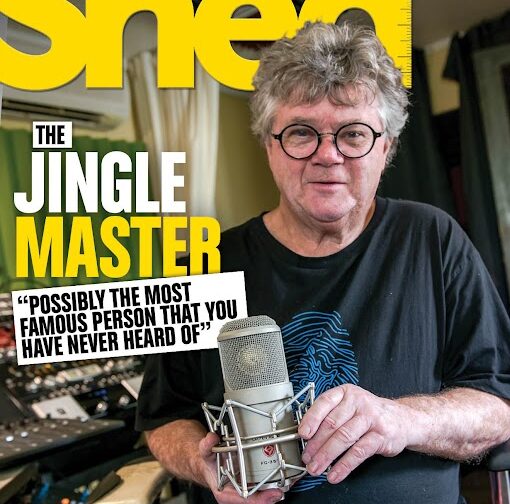
The Shed magazine June/July 2024 issue 115 on sale now
A ministry of sound
An under-the-radar icon of New Zealand music history tells how it all happened
Larry Killip’s love of playing music dates back to 1966, when he first jammed rhythm and blues with schoolmates in a band called the Zarks.
Since then, he has played in various iterations of that band; performed solo at the Nambassa festival to a crowd of 30,000 right before the headline act, Little River Band; been featured on the compilation album 20 Studio One Hits Volume 2; released seven albums and plenty of singles of his own; made appearances on Happen Inn, Telethon, Shazam, Drop of Kulcha, and Radio with Pictures TV shows; mastered the first two albums by Indie rock darlings, The Beths; and performed a medley of his best-known advertising jingles on the TV show 7 Days. With more than 500 jingle writing credits to his name, Larry laughs when he says he is “Possibly the most famous person that you have never heard of”.
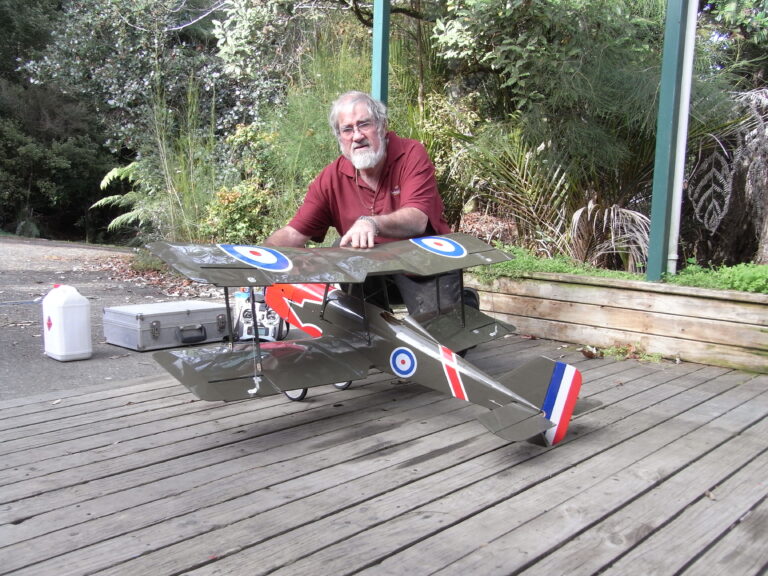
The world of model aircraft
Over boats, cars, trains and everything else in scale-model construction, I have chosen aircraft. Flying is super-exciting and heart-stopping…for everyone. My flying skills move between non-existent and highly incompetent, but I manage to get by. I enjoy the winter days and summer nights in my workshop building them, either from a kit or from scratch from a plan. In summer, during the better flying months, I repair the ones that partly survive.
The first thing you need is a workshop, preferably with enough stud height to hang the planes up. You need plenty of light and you can’t have enough work benches. I have miles of small tools, all available from the big hardware stores, and I use a small drill press, bandsaw, coping saw, belt and disc combo sander, plus the various drills, rotary tools etc.
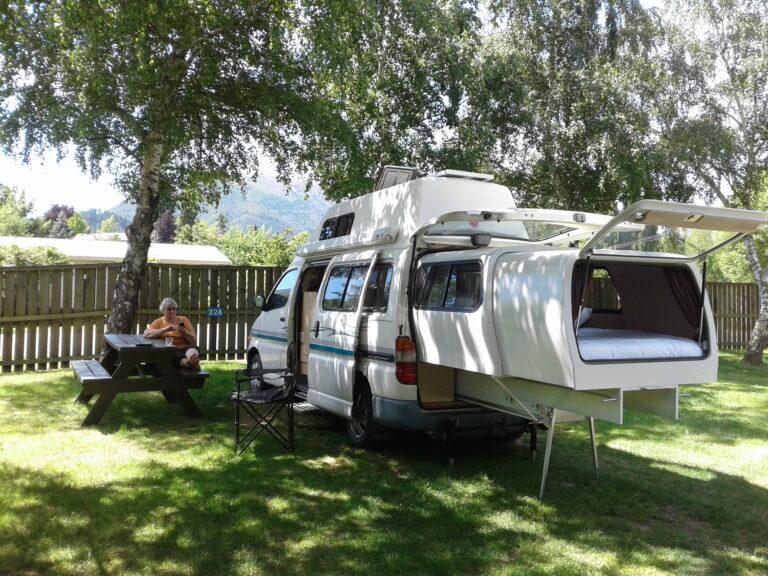
On the road
When Des and Kath Thomson decided to take to the road in their retirement, they wanted a campervan that was comfortable. They didn’t want to be clambering up ladders, tangoing at tea-time in too-narrow aisles, or struggling to turn tables into beds at night. But nor did they want to trundle around the countryside in a cumbersome mobile mansion.
They wanted a small, manoeuvrable vehicle that had masses of space inside. Space for everything, including the kitchen sink plus another in the bathroom, a separate shower, toilet, cooker, microwave, barbecue, table and chairs, wardrobe, drawers, hot and cold water on tap, plenty of storage…oh, and a queen-size bed.
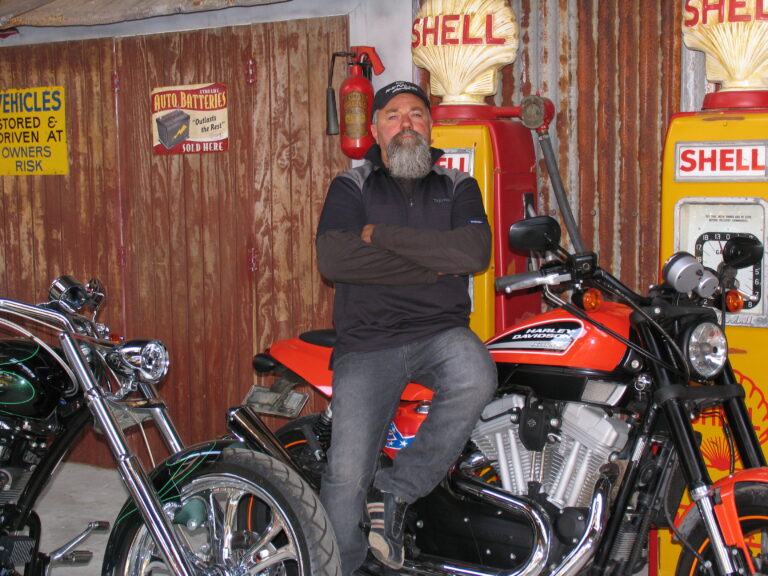
A dream shed that came true
Gary Wells has a shed that isn’t quite your normal sheddie bloke’s shed. It is still a place of work but a recent extension, after a quick clean-out, now doubles as a well-appointed entertainment area complete with bar and luxurious sofas which Gary made from the backs of two Ford cars. It could also be the old 1950s petrol station at Makarewa, once a small township and now incorporated into Invercargill to the north. A quick glance around Gary’s shed at the old-style petrol bowsers, the weather-beaten, corrugated iron wall, advertising placards and oil dispenser puts you back in the days when petrol was actually served to customers.
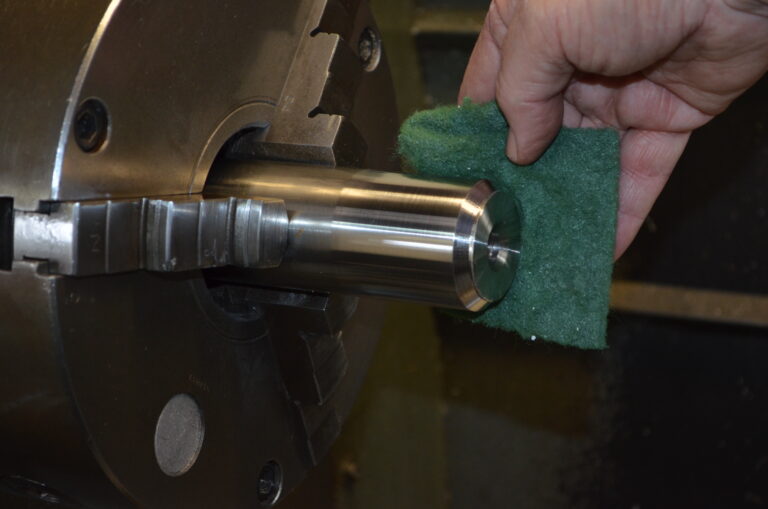
The right stuff – part 2
If you have followed our Metalworking Lathe 101 series in The Shed magazine, you will have a grasp of the basics, so here are some helpful tips to improve your lathe experience and make those projects a bit easier to do.
Quite often the material or item we need to hold in the chuck is delicate, either due to a fine finish that we do not want to put chuck jaw marks on or due to it being thin walled. For jobs with a surface finish that you need to protect it is handy to have some strips of aluminium to put between the chuck jaws and the job material. These are mostly used when holding in a 4 jaw chuck as the job will need to be “clocked up” using a dial indicator to get it running true.
The thickness of the aluminium strips cannot be relied on to be consistent as they squish up a bit with the tightening of the chuck jaws, so when using a 3 jaw chuck the auto centring effect is not so good.
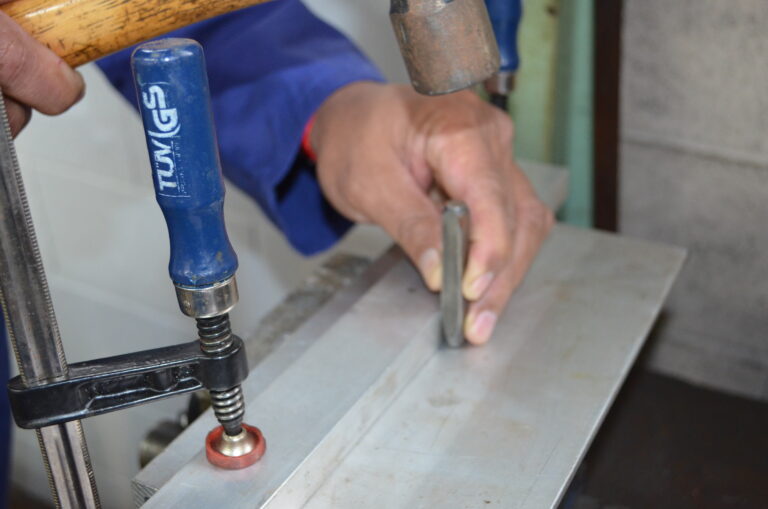
The right stuff – part one
These tips are a random collection of thoughts that I have grouped under the classification of things that relate to working at a bench using hand tools, rather than using a lathe, mill or other machine tool. So if you have only a workbench with some hand tools in your shed, this is meant to be useful for you too.
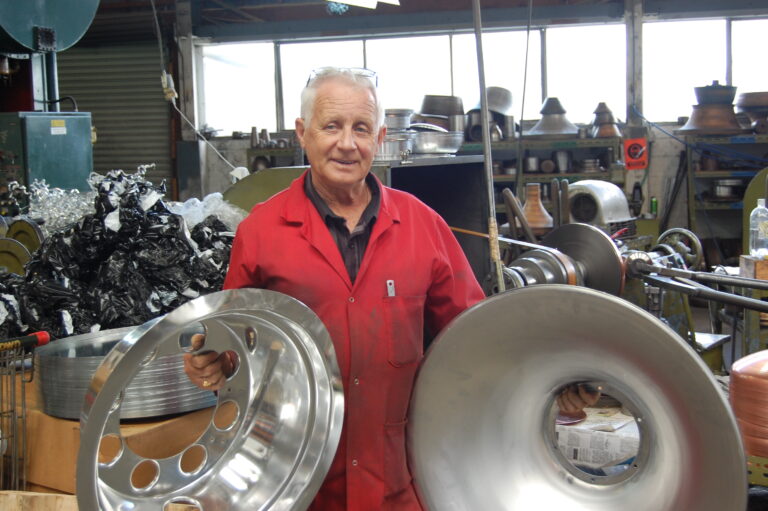
Metal spinning lives
The exact origins of metal spinning are unknown but the craft can be dated back to ancient Egypt where examples of spun vessels have been found. Metal spinning today differs little from the past with the only real advance being that an electric motor is used to drive the chuck instead of manpower or water power.
Before the advent of power presses, metal spinning was used to make almost all round sheet metal objects such as pots, pans, lampshades and wheel rims.
The principle of metal spinning is simple: a disc of metal is clamped between the tailstock and a former or mandrel. The disc is spun and the operator then uses a lever to manually work the metal down onto the mandrel. The process helps maintain the structure of the material and does not stress it, resulting in a stronger and more stable product than if it was pressed.
While metal spinning by hand does not generally alter the thickness of the material, hydraulic-powered tools can be used to flow-form products making sections thinner where required.
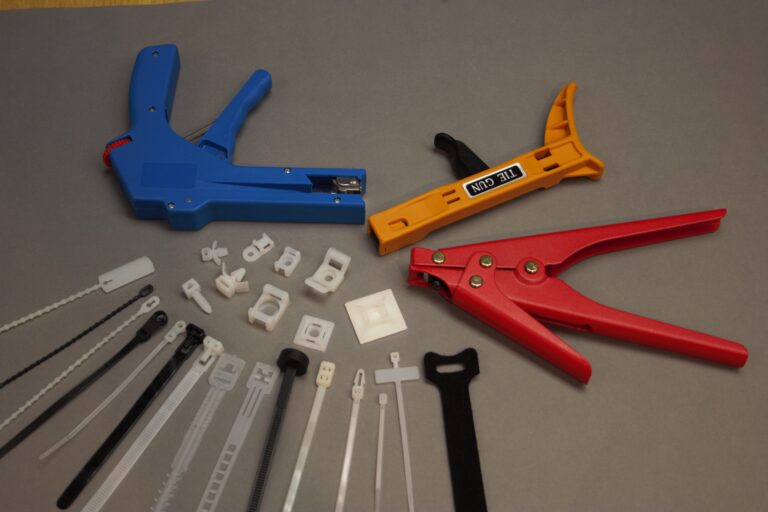
Hi-Q Components has it all tied up with their range of ties
If you’re looking for plastic cable ties and mounts, and cable management components, it’s hard to beat Hi-Q Components’ comprehensive range, which covers just about anything you’ll need for the job in hand.
Its selection of plastic fixings and fastenings includes standard strap-type cable ties, from 75mm x 2.4mm to 1500mm x 9mm; as a bonus, many sizes are available in weather-resistant black nylon for outdoor use. Hi-Q also has specialist ties covered, with stock including HVAC duct straps, heavy duty for hydraulic hoses, releasable, screw mount, marker, push mount, double loop mounting, hanking, and beaded ties. As well as cable ties, Hi-Q offers a great selection of cable tie mounts, such as quick and easy self-adhesive tie mounts, and push and lock clip mounts for through-hole panel mounting.
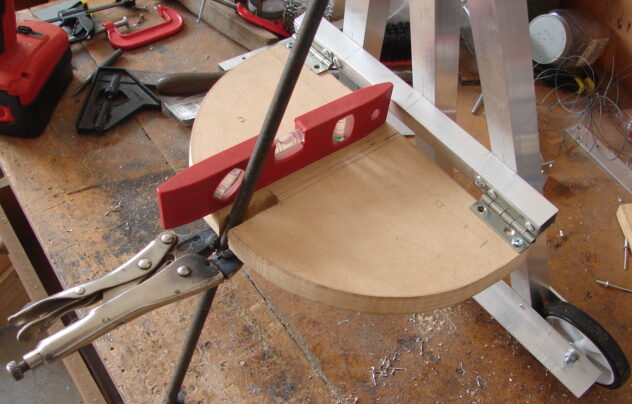
Rolling stool build
My wife, Rosaleen, loves to cook, and will happily spend an afternoon in the kitchen cooking meals to be frozen and given to our daughters and their friends whenever the need arises or opportunity presents.
However, arthritis makes standing in one position for long periods difficult for her. She wanted a stool for the kitchen, but ours is a galley-style layout and quite narrow. It’s wide enough for one person to walk past another working in the space, but the presence of a stool would present a major obstacle. “Why don’t you invent something?” she said.
I love a challenge like that.

Engines on the move
Something that many shed owners must face at some time is how to maintain their hobby if they have to downsize their property. Owen White is one person who has successfully achieved this by not only downsizing the house but downsizing the hobby. Instead of restoring old internal combustion engines he now makes scale models of them.
In the 1960s, Owen got hold of a 1930s 9 hp Briggs and Stratton stationary engine to restore and was bitten by the vintage engine bug. It sparked a 50-year passion for old combustion engines, and for repairing, restoring and running them at vintage engine shows. Owen joined the Vintage Engine Restorers Club in 1985 after attending their third meeting and remains an active member.
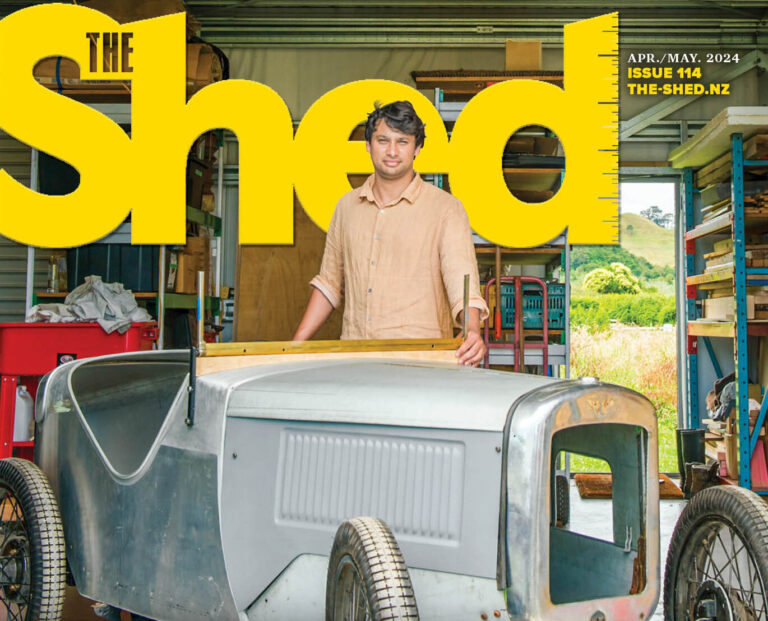
The Shed magazine April/May 2024 issue 114 on sale now
When Athanasius (Athow) Santamaria made an “impulse decision”, to buy a pile of old Austin parts in 2015, he didn’t really have a project in mind.
But this young kiwi sheddie, with no car building experience at all, figured he would have a crack at building a car from this pile of parts. Now, he is well down the track to completing an authentic reproduction Austin Seven Ulster; a scratch-built, boat-tail, two-seater sports car.
Athow south guidance and advice from Austin and vehicle restorers far and wide and the result is really quite remarkable. There is still some way to go but the skills he has acquired on his journey is apparent for all to see.
“The Ulster body is shaped from 5005 aluminium, which is a little harder than industry standard 3003.
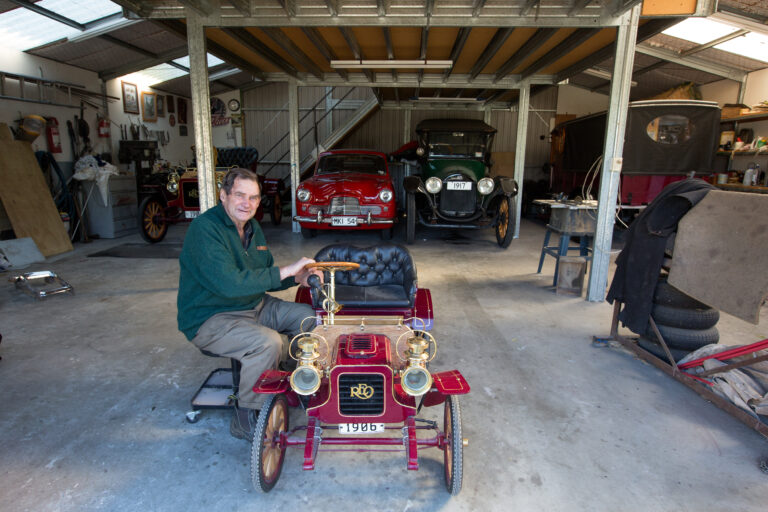
Mr Fix it
Ian Chamberlain’s shed is upstairs in the second storey of his double garage in Whanganui. Ian certainly needs all the room on the ground floor to park just a few of the vintage and classic cars he has restored over the past 30-odd years. And while the styles of car evoke a walk down memory lane, the vehicles look brand-spanking new.
There’s a fire-engine red Mark 1 Zephyr convertible, a more staid looking green and black 1917 Buick, the red and brassy 1906 Reo, and its miniature look-alike.
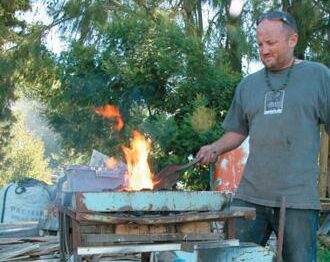
Make your own backyard forge
This is one of the very basic forges for heating metal bars. There are many other types of forge out there and Youtube can show you how to build and use them. My forge was made of scrap steel from my workshop and the local recycling centre.
The forge essentially consists of a fireplace or “bowl” in firebricks which are held firmly together in a brace or strap. They sit on top of a steel plate. Another steel plate sits on top of the bricks, with a large square in it to allow access to the firebowl.
A small, round, high-grade steel grate with several holes in it sits at the bottom of the brick bowl. Below this fireplace, a vertical pipe-fitting is welded into the supporting steel plate. The bottom of the pipe is an ash trap, and the ash can be dropped out by opening a small trapdoor.
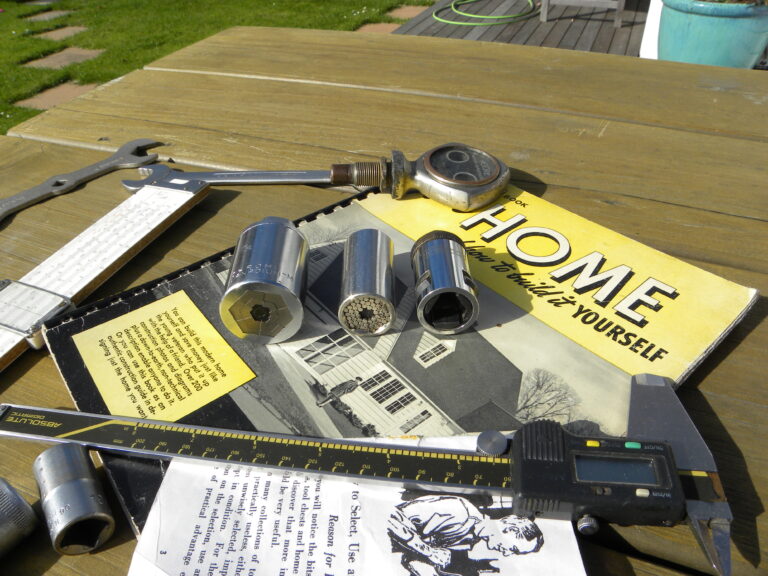
Size matters
Over the years I have bought three universal sockets from second-hand tool dealers. Only one has a name and the manufacturer stamped on it, the American made “Ultra Socket”, while another is obviously a close copy of the “Gator-Grip” which is advertised on the internet.
I think the real appeal of these mechanical curiosities is that they can grip fasteners for which purpose-made sockets can’t readily be purchased, and the reason for that is that the system of sizing nuts and bolt heads has changed more than once over the past 50 years.
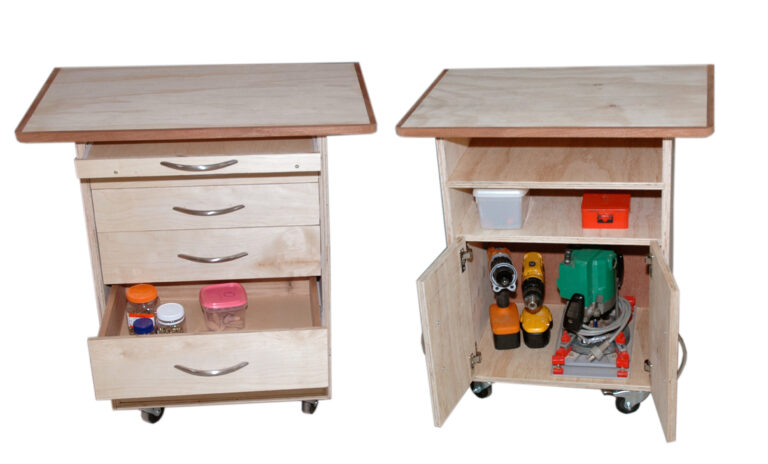
Rolling tool storage
The first law of shed dynamics is: The need for shed space will always grow to exceed the space available.
With space at a premium, it is incumbent to make the best use of it. So I evolved an idea for a modular set of moveable cabinets that could be rolled out for each job and configured as required. It means I could easily house my commonly used tools and still retain space in the shed.
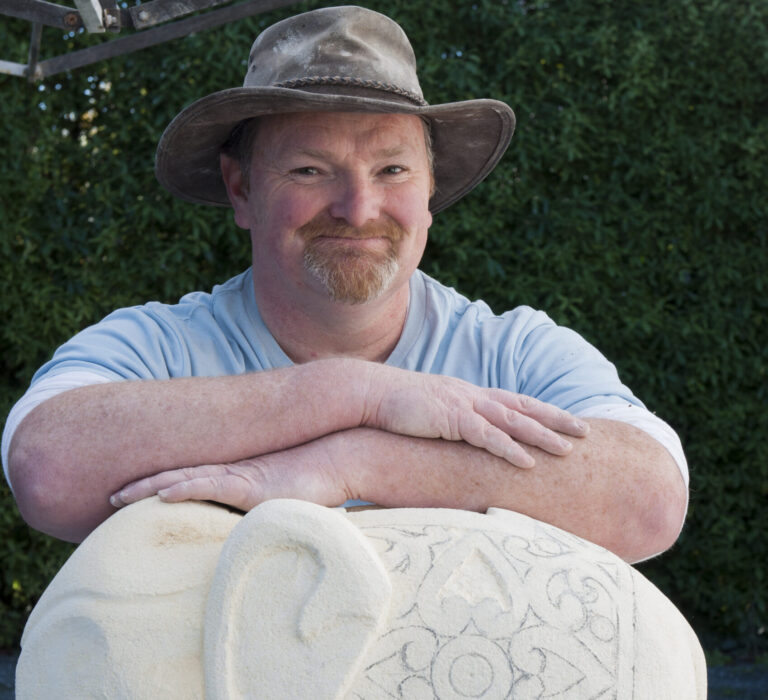
Carving out a career
Shaugn Briggs’ shed is a 6m x 3m pop-up gazebo and heavy-duty groundsheet. And that’s just on a bad day. When the sun is shining, the Christchurch limestone carver works alfresco, with the sky overhead and surrounded by trees and music.
The shedless sheddie’s “workshop” consists of a pile of portable Ryobi benches and an assortment of tools in stackable plastic tubes. When not stored in the single garage at the end of his drive, they are loaded on the trailer he tows around to various working and teaching venues.
Shaugn, who is also an accomplished painter, started his working life, somewhat reluctantly, as a painter and decorator. “The art thing was all I ever wanted to do but there is always that pressure to get a proper job,” he says.

Hi-Q Toggle clamps
Toggle Clamps
When it comes to clamping, lever-action toggle clamps offer excellent power from a quick and easy motion and they are simple to install for ready access. Toggle clamps have a multitude of uses in engineering, metal fabrication, and woodworking. Hi-Q Components stocks a wide range of high-quality Turkish-made Kukamet toggle clamps including horizontal and vertical actions, latching or push–pull configurations with different mounting options, and even pneumatic versions.
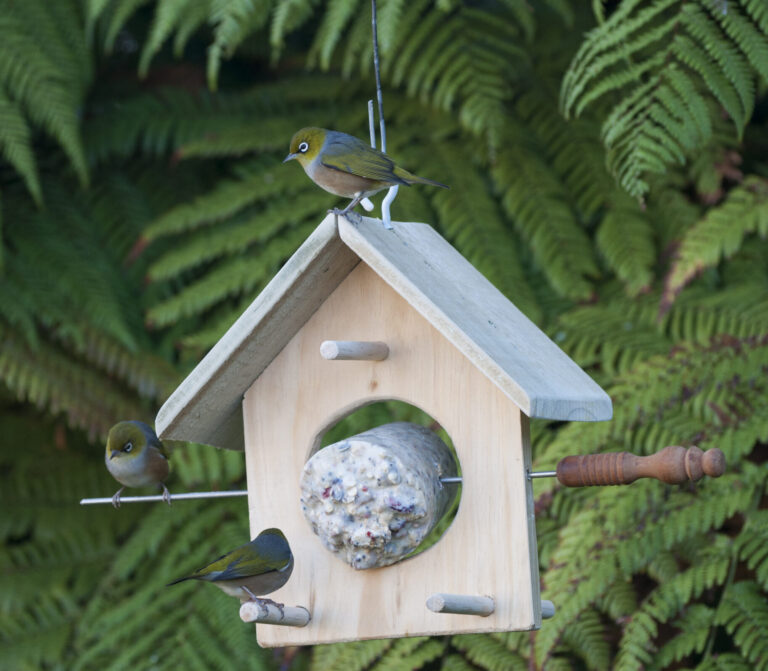
Snack shacks for birds
Home handyman Rob Allison originally made his first birdfeeders as Mothers’ Day presents for his mother, mother-in-law and wife. Popular demand has seen his feeders, with a few modifications, hanging on trees in the gardens of friends and family around Christchurch.
“It’s a very simple design,” says Rob. “An ideal first project for a youngster interested in woodwork, and they will have the added pleasure of watching the birds enjoy their handiwork.”
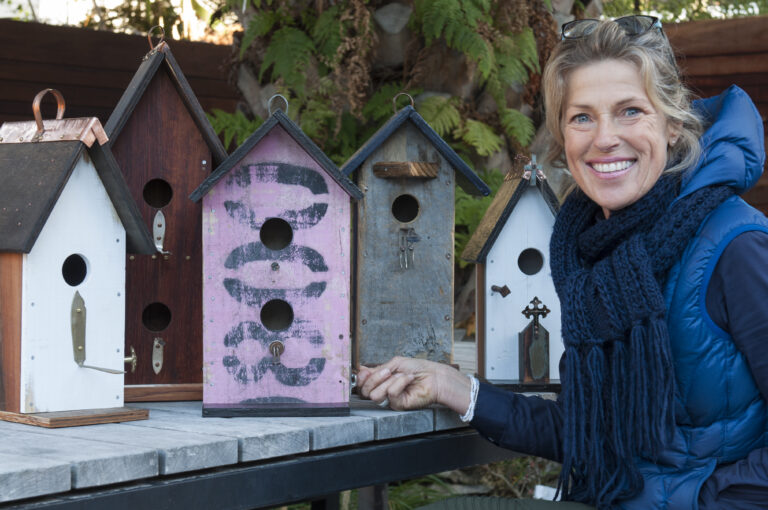
One for the birds
Megan Collings’ birdhouses tick a lot of boxes. Her quirky shelters are not only well-constructed and aesthetically pleasing, but they are indirectly providing food and shelter for more thanher feathered friends. Megan gives the proceeds from every birdhouse she sells to an orphanage in Nepal.
“The earthquake in Nepal hit me hard after our own quakes in Christchurch,” says Megan. “I couldn’t get it out of my head, there were so many thousands affected. I wanted to go over and help but felt I was just a nobody. I’m not a nurse, I’m not a doctor. I love making my birdhouses and thought it was a way I could create and sell for a good cause.”
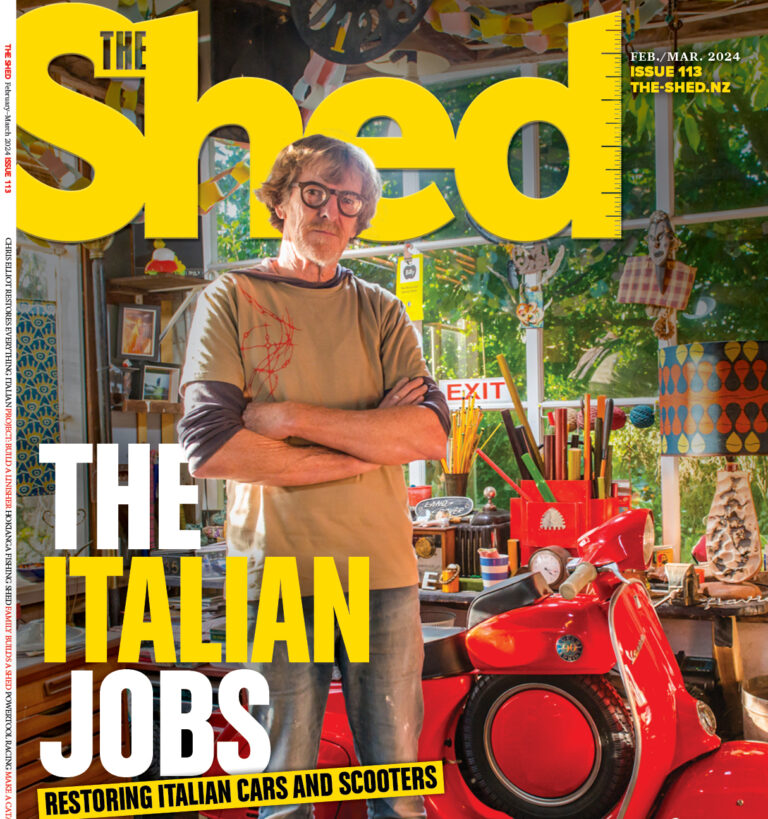
The Shed February/March 2024 issue 113 on sale now
This February/March 2024 issue 113, we visit a whole bunch of sheds around NZ and in fact all around the world. We start with a profile of the talented Auckland sheddie Chris Elliot.
Chris has a small shed in Central Auckland from where he restores Italian scooters and cars, well, cars that don’t take up a lot of space such as Fiat Bambinas. With a background in movies and TV set design, Chris is never idle and not only restores all the Italian autos he can but gets his creative side going with household artefacts as well. One talented sheddie.
Jason Burgess writes “A cinematic late-afternoon light pours through the corner window of Chris Elliott’s vest-pocket shed. The miscellany of collected artefacts, fabric, and vehicular memorabilia conjures up a neat yet cluttered bazaar in some exotic foreign land rather than an active workshop on the fringe of Auckland City. This concrete single garage is a celebration of creativity and productivity. Swinging a cat – or, for that matter, a hammer – might seem problematic in such confines but, when it comes to fulfilling a wide array of job briefs and cross-disciplinary commissions, Chris somehow makes things come together.”
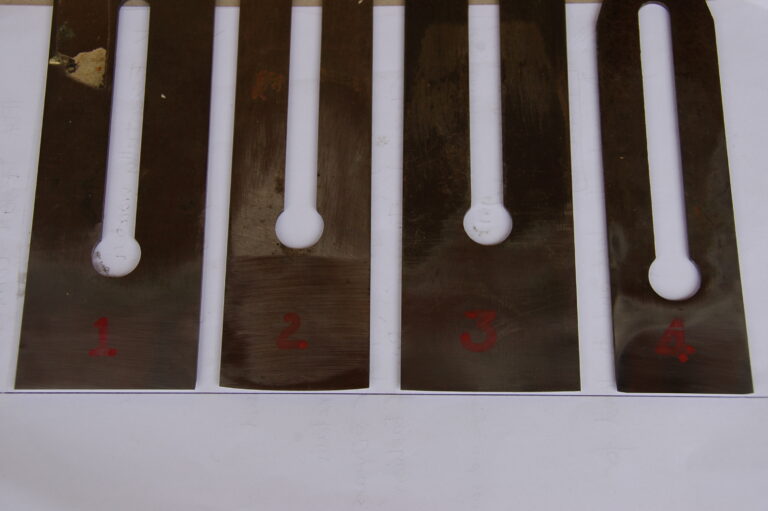
Customising your plane blade
In my previous article on sharpening a plane (“Sharpen up your plane blades,” The Shed magazine, Feb/Mar 2010 – also on this website) we worked on how to consistently produce a sharp, straight edge on our plane irons. Now that we have that skill in place it’s appropriate to look at how modifying that straight edge can allow us to achieve a range of differing results in our woodworking.
It is important to understand that what drives the modification of our cutting edges is what we want to achieve with them. Therefore after describing the shape of the plane blade, I’ve outlined four major tasks that we can achieve with the particular shapes our planes. Each requires progressive development of the edge “shape” so I recommend re-reading of the earlier article to get you on the starting blocks for this one.
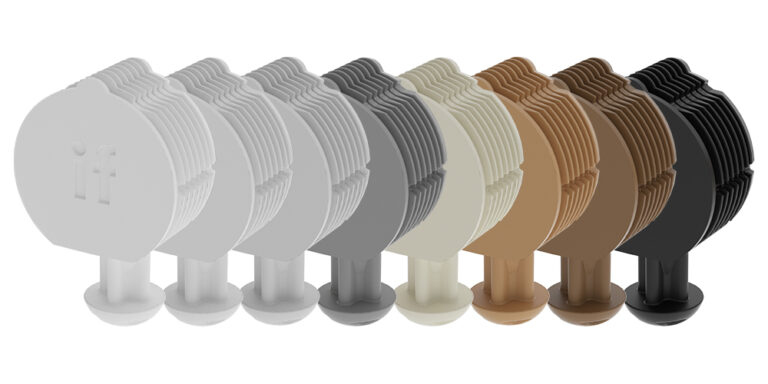
Locking in efficiency and innovation
In the world of furniture manufacturing, every detail matters. A new product revolutionising cabinet and furniture construction is the Peanut Connector. Available from Jacks, these unassuming yet highly effective furniture connectors are set to become an essential tool in the arsenal of modern cabinetmakers. Peanut connectors offer a host of advantages that speed up and simplify the assembly process, reduce material costs, improve the overall quality of cabinetry, and deliver a more contemporary slim-line look. Let’s explore these connectors and the numerous benefits they bring to the table.
